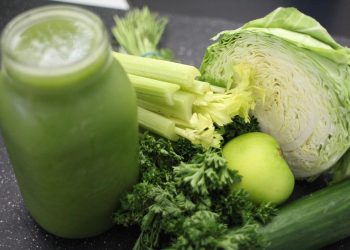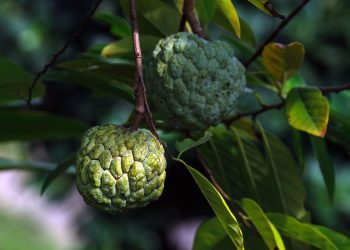Superfoods that speed up your body’s healing process are more than just a trendy term; they’re your best allies in recovery and vitality. When your body faces challenges—whether it’s an injury, illness, or even just the daily stressors of life—what you eat can significantly impact how quickly you bounce back.
In this article, we’ll dive deep into ten powerhouse foods that can help accelerate your healing journey. These aren’t just foods; they’re nature’s little miracles, packed with nutrients that work wonders. So, grab a cup of tea, settle in, and let’s explore how you can nourish your body effectively.
Contents
- What Are Superfoods?
- Why This Matters to You
- 1. Blueberries: The Antioxidant Powerhouse
- 2. Turmeric: Nature’s Anti-Inflammatory
- 3. Spinach: The Green Leafy Wonder
- 4. Salmon: The Omega-3 Champion
- 5. Ginger: The Digestive Aid
- 6. Garlic: The Immune Booster
- 7. Quinoa: The Complete Protein
- 8. Nuts and Seeds: The Nutrient-Dense Snack
- 9. Sweet Potatoes: The Fiber-Rich Carb
- 10. Broccoli: The Cancer-Fighting Vegetable
- How to Incorporate These Superfoods into Your Diet
- Final Thoughts
- Bottom Line
- Frequently Asked Questions
What Are Superfoods?
Superfoods are nutrient-rich foods considered to be especially beneficial for health and well-being. They are packed with vitamins, minerals, antioxidants, and other compounds that work harmoniously to enhance your body’s healing processes. When you incorporate these foods into your diet, you’re giving your body the tools it needs to repair, regenerate, and thrive.
Why This Matters to You
Understanding the power of superfoods is crucial. Your body is a remarkable machine that constantly works to heal and maintain itself. But it can’t do it alone. The right foods can reduce inflammation, boost your immune system, and even improve your mood. Whether you’re recovering from surgery, managing a chronic condition, or simply feeling run down, these superfoods can help you reclaim your health and vitality.
1. Blueberries: The Antioxidant Powerhouse
Blueberries are often touted as a superfood for a reason. These little blue gems are packed with antioxidants, particularly anthocyanins, which give them their vibrant color.
- Benefits: They fight oxidative stress, which can slow down the healing process.
- How to Use: Toss them in your morning oatmeal, blend them into smoothies, or enjoy them as a snack.
2. Turmeric: Nature’s Anti-Inflammatory
Turmeric has been used for centuries in traditional medicine, and it’s no surprise why. Curcumin, the active compound in turmeric, is known for its potent anti-inflammatory properties.
- Benefits: Reduces inflammation and pain, which is vital for healing.
- How to Use: Add turmeric to soups, stews, or golden milk for a comforting drink.
3. Spinach: The Green Leafy Wonder
Spinach is a nutritional powerhouse that’s low in calories but high in vitamins and minerals. It’s rich in vitamins A, C, and K, as well as iron and calcium.
- Benefits: Supports your immune system and promotes faster healing.
- How to Use: Make a fresh spinach salad, blend it into smoothies, or sauté it as a side dish.
4. Salmon: The Omega-3 Champion
Fatty fish like salmon are rich in omega-3 fatty acids, which are essential for reducing inflammation and promoting heart health.
- Benefits: Omega-3s can speed up recovery by reducing inflammation and supporting brain health.
- How to Use: Grill, bake, or pan-sear salmon for a delicious meal.
5. Ginger: The Digestive Aid
Ginger has been used for centuries for its medicinal properties. It’s not just great for your stomach; it also has anti-inflammatory effects.
- Benefits: Eases nausea and supports your immune system.
- How to Use: Brew ginger tea, add it to stir-fries, or include it in smoothies.
6. Garlic: The Immune Booster
Garlic is more than just a flavor enhancer; it’s a natural antibiotic packed with sulfur compounds that boost your immune system.
- Benefits: Helps your body fight off infections and speeds up recovery.
- How to Use: Mince fresh garlic into your dishes or enjoy roasted garlic spread on whole-grain bread.
7. Quinoa: The Complete Protein
Quinoa is a gluten-free grain that’s loaded with protein and essential amino acids, making it a great choice for healing.
- Benefits: Provides energy and helps repair tissues.
- How to Use: Use it as a base for salads or as a side dish.
8. Nuts and Seeds: The Nutrient-Dense Snack
Nuts and seeds are tiny powerhouses of nutrition. They’re rich in healthy fats, protein, fiber, and vitamins.
- Benefits: Support heart health, boost energy, and decrease inflammation.
- How to Use: Snack on them raw, add them to salads, or blend them into nut butters.
9. Sweet Potatoes: The Fiber-Rich Carb
Sweet potatoes are not only delicious but also packed with vitamins A and C, fiber, and antioxidants.
- Benefits: Support immune function and provide sustained energy.
- How to Use: Bake them, mash them, or add them to soups for a sweet twist.
10. Broccoli: The Cancer-Fighting Vegetable
Broccoli is a cruciferous vegetable that’s loaded with vitamins, minerals, and powerful antioxidants.
- Benefits: Supports detoxification and enhances immune response.
- How to Use: Steam it, roast it, or toss it in stir-fries for a nutritious boost.
How to Incorporate These Superfoods into Your Diet
You don’t have to overhaul your life to reap the benefits of these superfoods. Start small:
- Mix and Match: Add one or two superfoods to your meals each week.
- Meal Prep: Prepare meals in advance that incorporate these foods, making it easier to stick to your goals.
- Experiment: Try new recipes that feature these ingredients to keep things exciting.
Final Thoughts
Your body is resilient, but it needs the right fuel to heal effectively. By incorporating these superfoods that speed up your body’s healing process, you’re not just nourishing yourself; you’re empowering your body to function at its best.
Bottom Line
You have the power to influence your healing journey through your diet. Embrace these superfoods and watch as your body responds positively. Remember, small changes can lead to significant results.
Frequently Asked Questions
1. How often should I eat these superfoods?
Aim to include at least one or two in your daily meals. The more variety, the better!
2. Can I combine these superfoods?
Absolutely! Many of them work wonderfully together in smoothies, salads, and bowls.
3. Are there any superfoods I should avoid?
Listen to your body. If you notice any adverse reactions, consult a healthcare professional.
Make the choice to nourish your body wisely. You deserve to feel vibrant and healthy!
Get Your FREE Natural Health Guide!
Subscribe now and receive our exclusive ebook packed with natural health tips, practical wellness advice, and easy lifestyle changes — delivered straight to your inbox.














